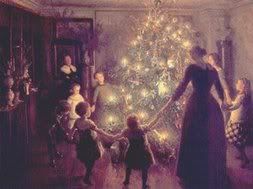 Easter and Christmas are like two sides of a coin. The sights and sounds of one remind us of the smells and bells of the other. Theologically, one can say that the saving work of Christ’s resurrection and ascension began with his incarnation and, if we recall John’s Gospel on Christmas day, with creation itself.
Easter and Christmas are like two sides of a coin. The sights and sounds of one remind us of the smells and bells of the other. Theologically, one can say that the saving work of Christ’s resurrection and ascension began with his incarnation and, if we recall John’s Gospel on Christmas day, with creation itself.
Of these two feasts, Easter is the pre-eminent celebration. In the first three centuries of the Church, Christians celebrated an annual memorial of Christ’s resurrection, but it wasn’t until the fourth century that the Church began to celebrate Christ’s birth. These earliest Christians understood what one Christmas carol tries to teach: “Christ was born to save.”
Some of our oldest carols understand well this unified theology of Christ’s birth, death, and resurrection. Charles Wesley’s 1739 text, “Hark! The Herald Angels Sing” has several verses that are rarely sung in Catholic churches today:
Come, Desire of nations, come,Here in this text, the meaning of the Word becoming flesh is not simply a Hallmark-card image of a baby in a manger or a sweet-sounding lullaby. It is the great exchange—the cosmic dance—between the Divine and the human. It is the primordial clash between light and dark, the serpent in the garden and the empty tomb that shouts, “Death, where is your sting?” God becomes one of us so that we may become more like God. In this lover’s exchange, God is clothed in human skin and takes on the mortality of earthly life so that we may be clothed with Christ and wear the garment of immortality.
Fix in us thy humble home;
Rise, the woman’s conquering seed,
Bruise in us the serpent’s head.
Now display thy saving power,
Ruined nature now restore;
Now in mystic union join
Thine to ours, and ours to thine.
This mystical union is the nuptial dance between God and creation, the weaving together of death and life, the push and pull of sadness and joy, and the counterpoint of our earthly song with the heavenly choir.
The definition of a carol is “an old round dance with singing.” It is the dance that comes first. Our carols teach us that Christian life is not about remaining at Bethlehem, frozen in winter snow, but about dancing together through the seasons of life to Jerusalem, to the cross and the empty tomb, dying and rising and thus birthing new life. Christmas is our reminder that our daily encounters with each other are another step in this pas de deux with God.
___
To reconnect carols with dancing and to give people the exquisite sensation of once again dancing to singing and singing while they dance, here is a collection of dances to fit 64 popular Christmas carols.
FILED UNDER: LITURGY
No comments:
Post a Comment